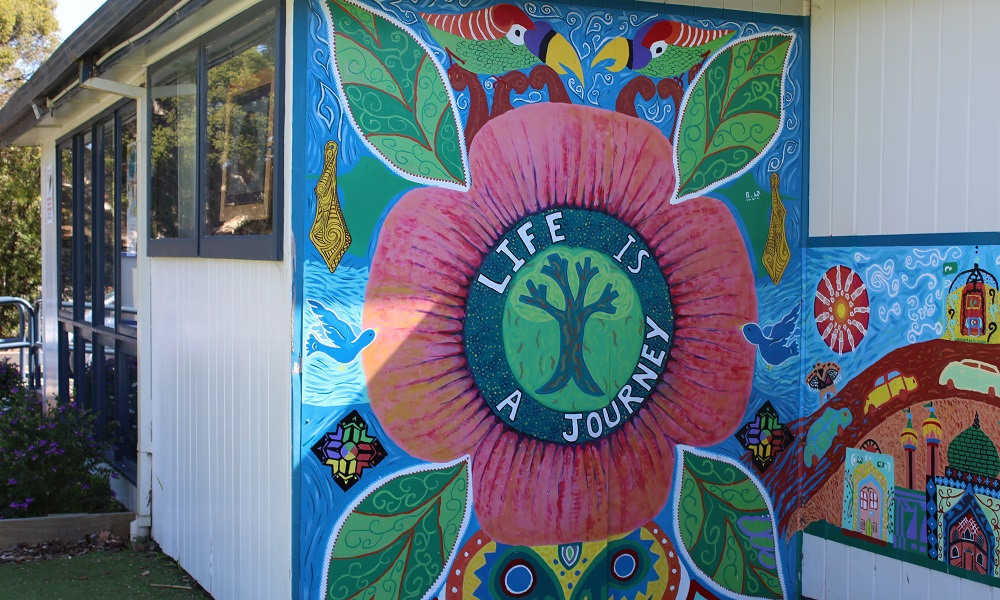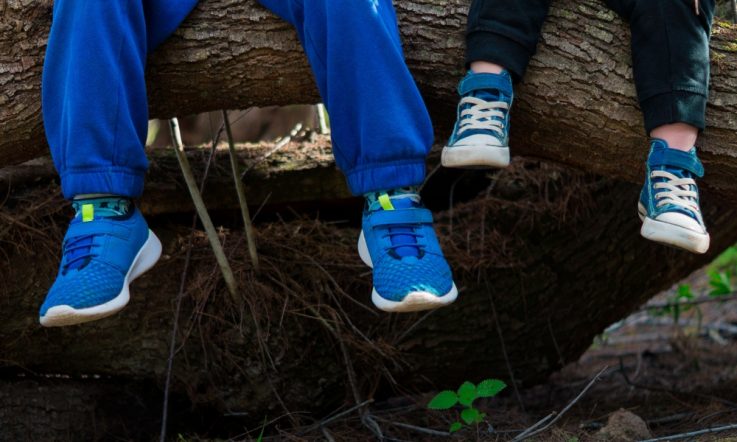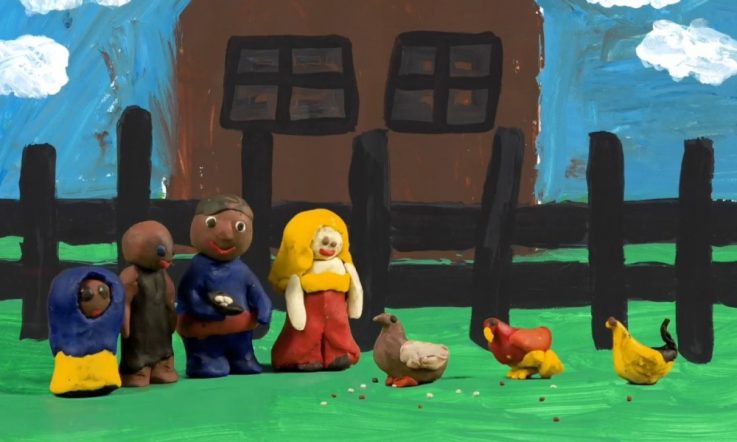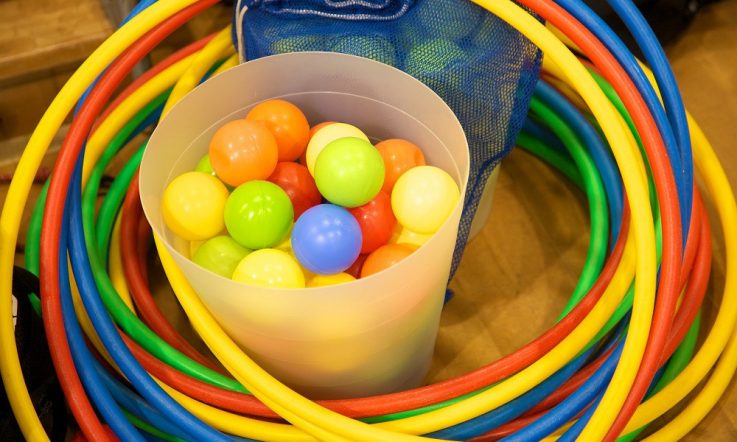Earlier this year, the Teacher team visited Noble Park Primary School (NPPS) to learn more about how the Victorian school creates a safe and secure learning environment for their students. In today's follow-up photo story, we focus on its expansive outdoor play and learning spaces.
Assistant Principal Susan Vissenjoux takes us on a tour of the school grounds, showing us how each element on the school yard has been created with intention, giving the students the freedom to explore, create and use their imaginations.
Having travelled to Europe with a colleague in 2013 to investigate play, Vissenjoux was inspired to create similar environments for the 370 students at NPPS. She attended a play conference in the UK, explored the Forest Schools program and playgrounds in Wales and various school settings, including a Reggio Emilia one, throughout Paris and Barcelona. These settings have been used as the inspiration for the creation of spaces at NPPS.
When the school was renovated six or so years ago, it found itself with piles of leftover dirt so they decided to create grassy mounds with it. ‘Many school environments are flat with fixed playground equipment and sporting areas and that's kind of it,' Vissenjoux says.
‘So that was the first thing we did. We just created a bit of interest in terms of some mounds and it's amazing to see what that does for the students.' Vissenjoux says it's common to see the children rolling down the hills, or parents waiting for their children on the hills at the end of the school day. The stepping stones on the grassy mounds have also been placed there with intention. ‘They're quite deliberately spaced to encourage students to skip or run across them,' she says.
As we begin walking into the forest, Vissenjoux says that the area is purposefully sparse and gets denser as you go through. ‘It's quite deliberate to make sure they can go through this really open area into a space where they can weave in amongst the trees, and get through to a space where they can really be immersed in nature, hiding in huts and so on. We have also planted to attract wildlife like birds and butterflies.'
Her inspiration for this area really came from her trip to observe a Forest School program in action in the UK. ‘I was involved in a session for three-year-olds and then one for teenagers. The first session really focused on the connection and shared ownership of natural spaces and was very playful. I then saw teenagers, 13- to14-year-old disengaged teenagers, have a session in the forest and I realised that we could really be quite playful with the younger children but we could actually also use it as an intentional wellbeing space and everything in between.'
The Play Pod is another idea from the UK. It is basically a place to store manufactured loose parts that the children can include in their play. 'The Pod is open every day and we pack away many things at the end of lunch time with the help of our Pod Masters (student leaders),' Vissenjoux says. 'Things that are being used can be left out for the week.'
As we walk though, there are random loose parts scattered throughout the forest, including a bedframe, buckets and car tyres. Vissenjoux explains that there are actually many things going on in this space.
‘The Forest is all about the natural, loose parts, and they use the loose parts to build and create and explore and then we have Pod stuff as well, and so they've created a cubby over here using that stuff. And often they'll intersperse bits and pieces through the forest.'
Students at NPPS are allowed to climb trees where there has been a risk analysis to determine it is safe enough. ‘There are only about five trees in the school that they actually climb because we've designated the risk to be worth it and there are others that they're not to climb. Probably about 20 children regularly climb trees here,' Vissenjoux says.
Referring to the tree pictured above, Vissenjoux says ‘this is one of the trees they're allowed to climb and it's actually got a really cool branch that's got notches in it. You can see we've got rubber matting under the trees as well to protect them if they fall, and then the matting gets hidden under the mulch.'
Fixed playground equipment is a common feature in most schools. 'It is still popular here but the students tend to modify the experience by adding loose parts from the Pod,' Vissenjoux says. 'They create lots of cubbies and hammocks. They particularly love the flying fox.'
At NPPS, there are no out of bounds areas, the school has few rules, and children are encouraged to explore and create as much as possible. Safety is always a priority though, and the stone wall around the giant gumtree is an example of how the school puts this into practice.
‘We needed to put a fence around the bottom of the tree on days when we felt we didn't want them going near the tree. It's a gum tree that gets checked regularly and it's got cabling up there so technically it can't drop branches, they're attached. But on a particularly windy day we might say "don't play under the tree",' Vissenjoux explains.
‘So we had to create a fence and it took us a while to come up with the idea that this is a playful and natural fence. So this is a boundary around it so we can say “don't go beyond the fence” – but it's also a fence they can run around on and play in and out of and it's just the perfect idea. It actually took us working with a landscape gardener who does a lot of that work to come up with the idea about what we could put around there to make it safe, but not to change it.'
The school's dry creek is roughly 100 metres long. ‘The thinking behind it is to have as free as possible play for our students,' Vissenjoux shares. ‘We're in a world where play is losing the battle in some respects to digital technology and screen time.
‘We have the full half hour for recess and the hour for lunch and “as free as possible” is what we're talking about. So, yes we have a boundary and yes we have times, so play workers would argue that it's not completely free play because there's a bit of a boundary to it, but it is as free as possible. And even this area is more like a beach area rather than a manufactured sandpit. Little things like that – so there's a lot of intention behind what we do. Nothing is just left to chance.'
Referring to the trees pictured above, Vissenjoux explains they were planted nearly two years ago, and the school is hoping they will soon be big enough to join over and create a tunnel for the students to walk though. ‘So we've had nearly two years of planting before we could make them reach over. So that will start to happen and we'll have a beautiful tunnel to go through and then obviously have ways in and out,' Vissenjoux says.
The school mostly uses Indigenous plants, but there is one area that is deliberately not Indigenous, so that students can see the seasons represented. ‘So we're waiting eagerly for our blossoms to come out and it will actually look really spectacular,' she adds.
The creek area took several years to plan and the ideas have been constantly modified along the way. 'It is actually in a different place than we first though it be and it is significantly longer,' Vissenjoux says. 'For this area, we wanted it to be all natural materials so the climbing structures evolved from that intention. Our school council were very involved in conversations over a few years and groups of students also shared what they would like.'
The school has ensured there are endless opportunities for the children to use their imaginations. ‘So, lots of textures, lots of nooks and crannies, lots of open spaces, lots of places that you can climb – we've tried to have everything that we can. Again, mounds and hills so it's not just flat. It's mirroring a natural environment,' Vissenjoux explains.
Vissenjoux says that a few times a week, she will go for a walk around the school grounds to see what the children have been up to in their free play. She says it's not unusual to see a lot of ‘cooking' or ‘perfume making' going on – children will pick berries and flowers and make their own concoctions. They school has created picking gardens for exactly that purpose.
One of the things you'll notice about NPPS is they don't have fixed soccer or football goals. Instead, the children can decide to set up the play equipment as they'd like to. ‘For lunchtime play, they don't need a full sized oval, they need a small spot for 10-20 children to play. So we will usually have two or three soccer or rugby scenarios. They just move the goals around as they require or improvise by making their own,' she says.
The school's kitchen garden area is an open space that the students are allowed to use whenever they like. Formal kitchen garden lessons take place two times a week, and students will spend the morning out in the garden, cooking and eating the produce they grow in the garden. The kitchen garden area includes tables that the students built themselves, a pizza oven and a fire pit.
The serpent in the kitchen garden area was designed and created by students during Hands on Learning. 'They also built the tables, oven and fire pit during this program,' Vissenjoux says. 'The program involves students from Year 5 and 6 who need some physical, less traditional learning.'
The school's chickens are free to roam out with the children when they're doing their kitchen garden lessons, but are locked away securely at night in a coop.
‘The students have to clean this out and you can see they decorate it in different ways too. We collect eggs. We had the chickens stolen twice so you can see it's actually quite secure in there. So the chickens are out here when anyone is out here. So, three days a week they're often out wandering when kids are out,' Vissenjoux says.
Completed at the beginning of the 2018 school year, the sensory beach area is the newest addition to the school yard and perhaps one of the most popular spaces for students. With weaving bamboo and sand throughout, this space is also the only one where students are allowed to have their shoes off while playing.
To discourage students from picking things out of the vegetable garden, the school has designated picking gardens that the students can use for their ‘cooking' and ‘potions'. ‘We've actually got four picking gardens around the school where they're allowed to pick flowers. So we've generally got a rule that you only use things on the ground, you don't pick anything off trees, but this is the exception,' Vissenjoux says.
‘One of our values is playfulness. We tried to get the nature of our playfulness in our rainbow sign out the front of the school. Since we put that up we have had so many passers-by come in to find out where we got our sign from.'
Vissenjoux says it's been so wonderful to have had the opportunity to create all these spaces and it brings her great joy to see the children using it to its full potential. She says that despite all the freedom the children are afforded, the staff don't have to do much to manage student behaviour in the school yard.
‘The students understand what safe enough means, they understand what risk means, and so you do trust them to make that judgement but there are five adults out here during break time. Some are here as teachers and some are here as teacher aides, but they're all here to be playing,' Vissenjoux explains. 'We actually call it Yard Duty Play Support so that is clear that we are not interrupting and managing but rather watching, listening and playing.
‘It's not so much “supervising” – it's a joining in, checking it out, clarifying. We encourage teachers to listen to the students, so don't just look across and make an assumption that they're doing something that they shouldn't be doing. There's almost nothing that they can't be doing. There's space and there's choice. We are very lucky that we have the amount of space that we have but we've actually worked really hard to create such beautiful and engaging areas for our community.'
In what ways do you take advantage of the natural resources in your school environment? Are students encouraged to build and create using these materials?
Think about how your school manages risk in the school yard. Are there any ways your students could be afforded more responsibility for their own safety? How would this work in your school setting?



